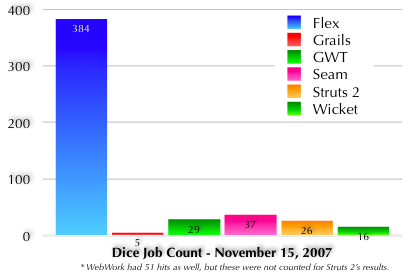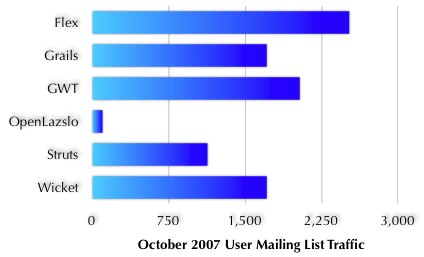All Java web frameworks should support hot deploy of a single class
In Anyone else using Groovy?, Tim Fennell (inventor of Stripes) raves at how much he likes Groovy now that it supports Java 5 features. He writes that Groovy might offer a solution to make development with Stripes faster:
The other thing I've been wondering about is that if there were enough demand for it we could try adding "improved" groovy support. E.g. throw your groovy actions under WEB-INF and we'll use groovy's built in stuff to do auto-reloading etc.
Gregg Bolinger responds with an excellent idea:
It would be really cool if Stripes could automatically discover and load changes to action beans (including new ones) without the entire app restarting, regardless of what the action bean is written in. But I realize that is a pretty tall order. :)
I agree that it might be a tall order, but I don't think it's impossible. In fact, I think all Java-based web frameworks should support hot deploy of a single class. We shouldn't have to buy JavaRebel to do this. It should be mandatory.
When an application reaches a certain size, the startup time can get pretty lengthy. This is lost development time. Furthermore, if any part of the development cycle takes longer than 15 seconds, there's a good chance developers will do something else (check their e-mail, move onto another task, etc.). Multi-tasking may be a good skill to have, but it's a horrible way to be productive.
Of the frameworks I'm familiar with, only Tapestry 5 and Seam support reloading single classes without restarting the whole application. Why can't the other frameworks "borrow" Tapestry 5's code? Maybe someone should just buy ZeroTurnaround and give away JavaRebel for free.
If I had one wish for 2008, it would be for all Java web frameworks to support this feature. Pretty Please?







